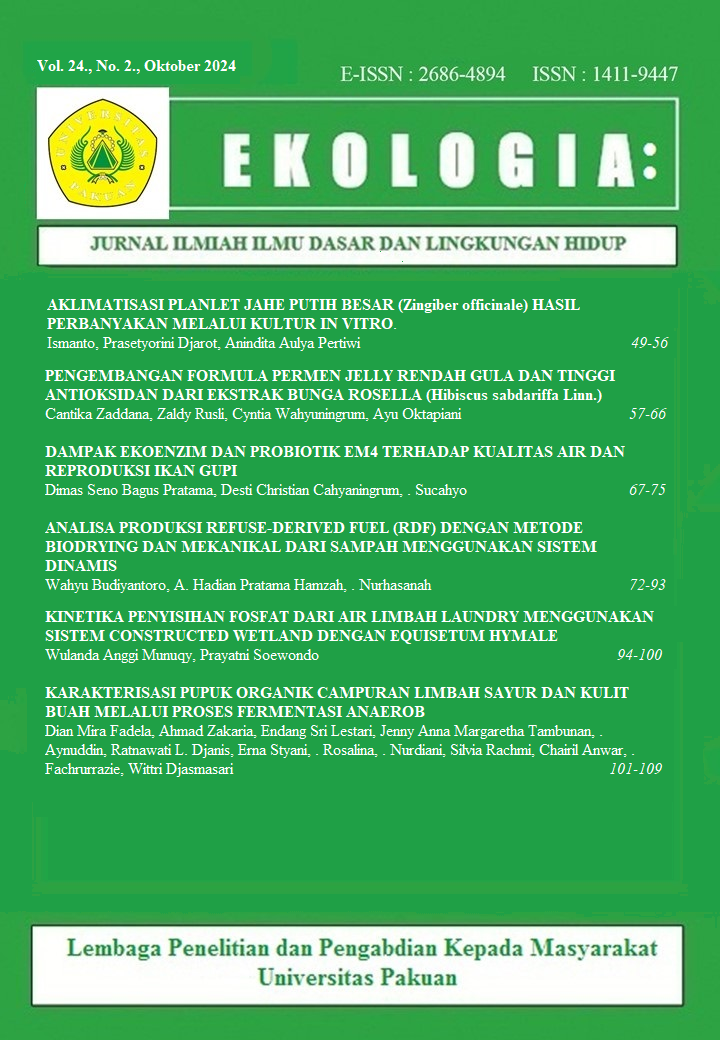KINETIKA PENYISIHAN FOSFAT DARI AIR LIMBAH LAUNDRY MENGGUNAKAN SISTEM CONSTRUCTED WETLAND DENGAN EQUISETUM HYMALE
Abstract
The increasing number of laundry businesses leads to an increasing amount of wastewater produced. The resulting laundry waste contains phosphates that if disposed of without treatment can provide eutrophication in the body of water. This study aims to lower phosphate levels found in laundry wastewater in the Dipatihukur area, Bandung using a constructed wetland system using the Equisetum hymale plant. Lowering phosphate levels using Equisetum hymale plants with variations of stay time of 1, 2, 3, 4, and 5 days with batch system. The results obtained showed that phosphate levels in waste before treatment of 10,846 mg/L. The value is greater than the standard of quality set by the government of 0.2 mg/L. Test Processing with Constructed Wetland shows that the plant Equisetum hymale can set aside phosphate significantly. The lowest phosphate rate after processing reached 0.227 mg/L with 96.75% contact time for 5 days. Phosphate preliminary rate by plants can be reduced with time of contact with the plant. The mechanism is the process of adsorption by the plant Equisetum hymale by referring to the first-order kinetic model by showing the value of regression coefficient (R2) 0.9014.
Keywords: constructed wetland, Equisetum hymale, phosphate, phytoremediation.
Downloads
Published
How to Cite
Issue
Section
License

This work is licensed under a Creative Commons Attribution-NonCommercial-ShareAlike 4.0 International License.













